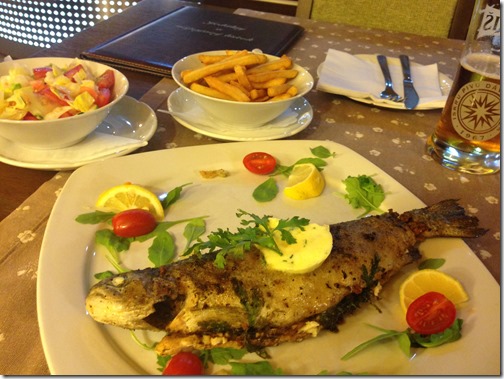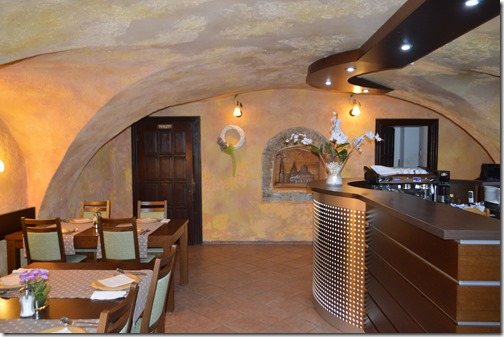I am generally happy with any place I travel until the newness wears off. Weariness with a place is a function of how much I enjoy where I am traveling. In Stockholm, Sweden this summer, that infatuation lasted less than 48 hours. I think that was one of the few trips where I would have been happier being in some other place in Europe. I left Stockholm after five nights for Krakow, Poland and immediately fell in love with Poland.
The fascination I had with Poland was its rich history, easily accessible social and cultural environment, combined with its affordability for this American tourist. The same rang true for Vilnius in April, my first time in Lithuania.
Now I am going on a week here in Slovakia and today my joy turned into a crush. I am loving Slovakia and I want to come back soon and see places I was unable to visit this trip. The country seems so laid back, yet people are highly active in the outdoors and other public social gatherings. That is the kind of culture I love to be in.
I was supposed to go to Bratislava today, but I changed my hotel plans to stay in Levoca, Slovakia. When reading hotel reviews on TripAdvisor for Levoca I recall someone writing that this was the kind of place they had been hoping to find on their travels in Slovakia. Those are my same sentiments. In lifestyles where many of us have only a few days or maybe a week to travel, location really matters when spending the money it takes to come to Europe for a week.
I enjoyed Kosice, Slovakia, but in two days I did not mind moving on to the High Tatras for hiking adventures. After three days of hiking, I was ready for something more cultural and historical. The High Tatras were my ultimate destination for this trip and the area met my expectations, but being in the wilderness and hiking is something I can do almost any day of the week with a less than one hour drive from my home in Monterey, California (when Big Sur is not burning up in summer wildfires).
But Levoca, a medieval town with a storied history and a current population of only 15,000 residents, is a place in the countryside recognized by UNESCO as one of the world’s heritage sites. This is something I can’t find in California. Hearst Castle, while pretty to view, does not even come close in terms of historical value to our California culture.
California Native Americans did not build any lasting structures that are modern day tourist attractions. I already live in Monterey, California, the town with the oldest European influenced cultural history in the state and that history only goes back to 1769. Sure, Native American Indians were living in California for a couple thousand years before the Europeans arrived, but it only took a couple decades after the California Gold Rush of 1849 for the politically and economically dominant newcomer Americans to decimate nearly any trace of Native American culture in my region of central coast California.
As I toured the extensive castle complex of Spissky Hrad today, 15 miles from Levoca, I realized that central European history and culture, virtually all the former Soviet bloc countries, are a history little known to the vast majority of Americans. I know this from my experience. I was a public school teacher who taught children American history for ten years and our American cultural history is almost entirely focused on western Europe and the white Anglo-Saxon protestant experience.
Yet, so much of what created our American cultural melting pot was based on the history of people who came from Central Europe. As I have traveled to Lithuania, Poland and Slovakia in the past six months, I am fascinated by the cultural and political history that very few of us in the USA were ever exposed to through American education, TV and media or pop culture.
I wonder if it is a combination of the fact that the Austro-Hungarian Habsburg Empire was the WWI enemy to western Europe and eventually the USA in early 20th century geo-political conflicts? Then, WWII and Germany became the enemy to denigrate. Then, much of Central Europe came under Soviet influence for nearly 50 years after WWII and another cultural ‘Cold War’ provided a reason justifying our lack of learning about these Central European countries.
Whatever the reasons for my ignorance and the ignorance of most Americans on the cultural history of Central Europe, I am finding Slovakia, Poland, and Lithuania are places that I enjoyed spending my travel dollars while learning about the culture and history of these regions.
I first went to Berlin, Dresden and western Czech Republic in 2000. These were places I could not visit when my family lived in Germany in the 1970s. I have witnessed how cultural ruins from WWII and older destruction and neglect were financed for restoration in these places. I saw historical sites in ruins in Dresden in 2000 and then went back to see beautiful tourist attractions in 2007.
In 2000, I was on an economic quest to find beer in the Czech Republic being sold in pubs for 15 cents a half-liter. I had read about those prices. Inflation had already driven the price up to 35 cents as the cheapest Czech pub beer I could find at the time. But, I recall having the most expensive menu item of steak and vegetables in a fine dining restaurant in an industrial border town of the Czech Republic, along with a couple of pints of beer for about $6.
Then over the past couple of years I read Krakow, Poland was the new Prague and a tourist holiday bargain. In Krakow, Poland and Vilnius, Lithuania this year, my wife and I were spending about $8 to $10 per person to have fish dinners and a couple pints of beer each in restaurants.
Today in Slovakia I had three pints of beer in restaurants and paid an average of about $1.10 USD per pint for wonderful tasting Saris. I plan to head to the restaurant next door to my hotel for a 4.00 EUR trout dinner ($4.50 USD) tonight.
Slovakia is an incredible bargain for American travelers who want to find historical culture, outdoor adventures and meet fun people in a place that is not so culturally different as going to Africa, Russia, or Southeast Asia. I have encountered language difficulties at times in Slovakia this week and some annoyingly persistent Roma beggars on the street, but I have never felt threatened for my safety like I have in Ecuador and Venezuela or worried about health risks like I have in Southeast Asia or gotten angry at hawkish sales people like I have in Bali or Bangkok or the Dominican Republic.
I can travel in Central Europe doing the activities I enjoy without the economic hardship of traveling through much of western Europe for a couple of weeks, where dinner in a restaurant with alcohol is going to cost $25 or more per person or even $50 or more in Norway and Sweden to get basic food each day when traveling.
In Slovakia, I have eaten restaurant meals two times a day most days for the past week and averaged less than 20 EUR per day for all my travel expenses, excluding my hotels. That 20 EUR per day has paid for all the trains, buses, copious amounts of beer, hot meals in restaurants and even some souvenirs.
I am feeling hungry after spending the day hiking around an 800 year old castle in Slovakia. I still have 30 EUR in my pocket from the 150 EUR I withdrew from an ATM six days ago. Time for a trout dinner and a couple pints of good beer. That should set me back 6 or 7 EUR tonight.
I’m loving Slovakia.
That was an expensive 16.10 EUR all day excursion for castle admission, audio tour, t-shirt souvenir and two bus rides. Add the cost of four restaurants and pubs for a hot chicken lunch, hot fish dinner and two liters of beer and I will have spent 26 EUR today.
I am living the tourist high life.
Update and correction: Ate trout dinner at Hotel Arkada, Levoca. Turns out the trout was 4.00 EUR for first 150 g, then 0.20 EUR per 10g. The whole trout priced at 7.80 EUR. Not quite the bargain I had expected, but tasted fantastic and ambiance of eating in a 14th century building cellar was fantastic.
Talk about service. One woman was the waitress for 10 tables filled with diners, probably 40 customers, she also ran the bar, cleaned all the tables and handled the bills. Since no wifi on my phone through 4-ft thick walls I observed her handle all those tasks and she never even looked bothered.






11 Comments
Comments are closed.